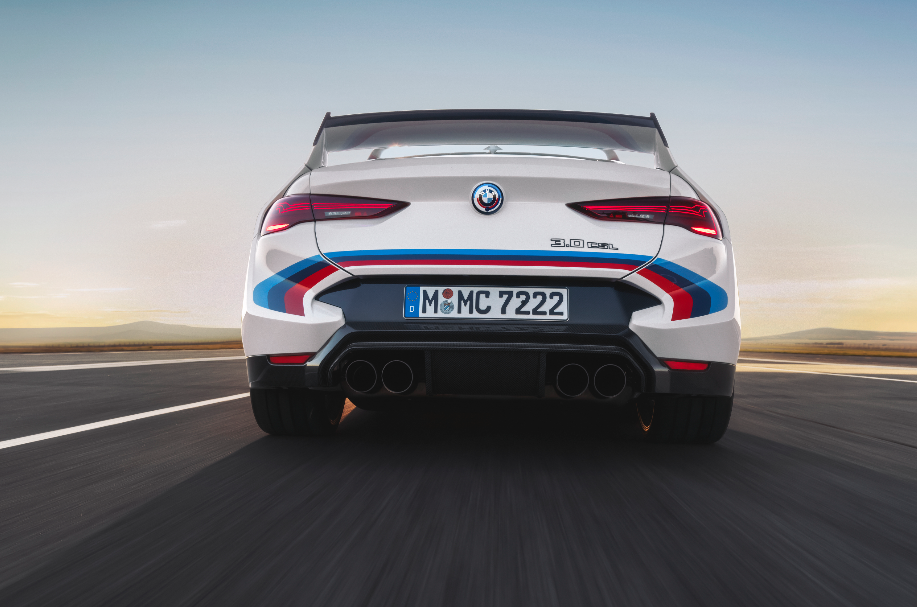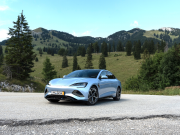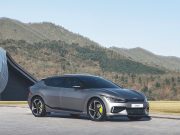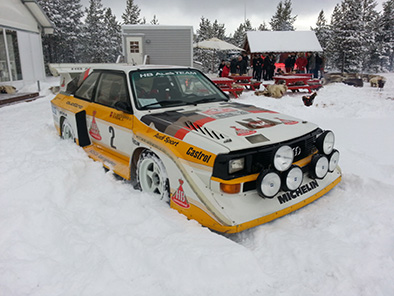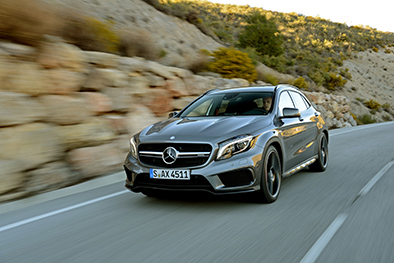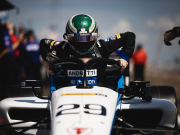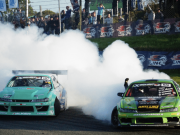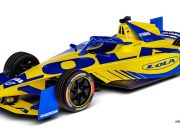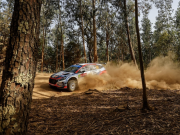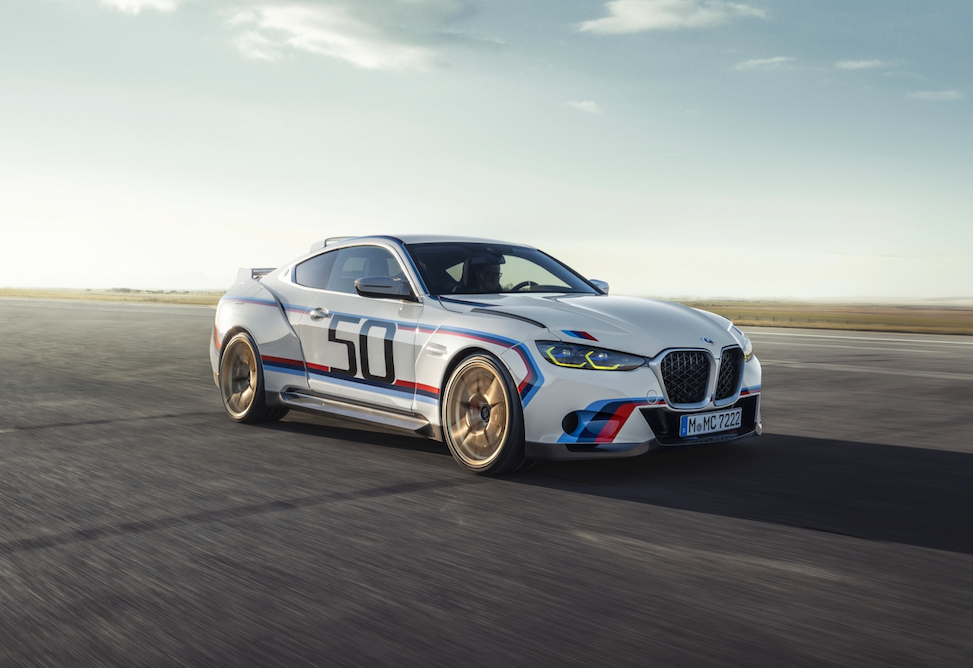 As the anniversary year comes to a close, BMW M GmbH is presenting the most exclusive special model the company has ever produced – a masterpiece of engineering embodying the essence from 50 years of racing passion and expressing its historic roots in a legendary model designation.
As the anniversary year comes to a close, BMW M GmbH is presenting the most exclusive special model the company has ever produced – a masterpiece of engineering embodying the essence from 50 years of racing passion and expressing its historic roots in a legendary model designation.
The BMW 3.0 CSL (fuel consumption combined: 11.0 l/100 km; CO2 emissions combined: 249 g/km WLTP) combines a unique design with a pure performance experience in two seats and in doing so provides a truly unique and contemporary interpretation of the concept created in the 1970s – applying racetrack technology designed for sheer driving pleasure on the road.
The BMW 3.0 CSL was developed with the intention of combining the best of five decades of racing expertise from BMW M GmbH in an automobile with a highly emotional aura. All facets of its character – dynamic exterior elegance, a classic sportscar cockpit, intelligent lightweight construction, a straight six-cylinder engine, manual transmission and rear-wheel drive – are based on traditional principles of a BMW M automobile. These elements complement each other and combine with the latest technology to create the ultimate top performer in the style of the brand that has been successful for 50 years. A ride in a BMW 3.0 CSL is therefore not only an exclusive high-performance experience, but also an emotional encounter with the past and present of the world’s most powerful letter.
The BMW 3.0 CSL is produced in a strictly limited edition. To mark the anniversary, exactly 50 consecutively numbered units of the special model will go on sale. Right from the start, this gives the BMW 3.0 CSL the status of a rarity that will find its place in the vehicle collections of particularly loyal and enthusiastic fans of the BMW M brand.
The production of all vehicles will take around three months. Each and every one of them is created with absolute dedication to excellence in craftsmanship and precisely coordinated technologies in an elaborate manufacturing process at the BMW Group Dingolfing plant in Moosthenning, Lower Bavaria. The exclusive interior carbon fibre reinforced plastic (CFRP) components are hand produced by specially assigned bodywork specialists in Munich and at the BMW Group component factory in Landshut.
A specific process was also conceived for the paintwork of the BMW 3.0 CSL, in which craftsmanship and state-of-the-art technology complement each other to provide each individual part with its characteristic colour design. In addition, a team of 30 specially qualified and experienced technicians are responsible for the configuration and assembly of the vehicles. Due to the complexity of the manufacturing processes, each BMW 3.0 CSL passes through eight assembly cycles at as many production stations, a procedure that takes up to 10 days in total.
The extremely high proportion of individual manual work means that the time required to assemble a BMW 3.0 CSL is many times higher than that of a conventional BMW M automobile. After completing the manufacturing process, each vehicle will undergo a multi-stage quality inspection and approval process at the main Dingolfing plant before it is released for delivery to the customer. The BMW Group Plant Dingolfing is the company’s largest European production site. In addition to building several BMW M automobiles, the luxurious BMW 7 Series and body components for Rolls-Royce Motor Cars are produced there.
As the reincarnation of a legendary sports car both for the racetrack and the road, the BMW 3.0 CSL possesses all the characteristics of a pure M car. It embodies the joy of classic driving and an awareness of the traditional roots of BMW M GmbH in a uniquely exclusive form. Its eponymous role model is considered the first automobile to carry the DNA for maximum driving pleasure and passion, an unmistakable feature of BMW M automobiles to this very day. In the founding year of BMW Motorsport GmbH, it was developed for use in touring car competitions, where it became the most successful racing car of its era.
The racing version of the historic BMW 3.0 CSL won the European Touring Car Championship during its inaugural season in 1973 – and repeated this title win five more times in succession from 1975 to 1979. Drivers such as Toine Hezemans, Hans-Joachim Stuck, Chris Amon and Niki Lauda left the competition behind at the Nürburgring and numerous other circuits, followed by BMW’s first victories on US circuits as early as 1975. All these successes helped the works racing cars to gain international popularity.
The road version of the racing car, which was developed for homologation purposes, became a widely known symbol of inspiring driving pleasure focused on the essentials, especially in its final stage of development. CSL – this combination of letters in the model designation stood for “Coupé, Sport, Leichtbau” (Coupe, Sport, Lightweight), a concise summary of the two-door car’s recipe for success.
In addition to wide wheel arches, its coupe-shaped body also received an eye-catching aerodynamics package, which included a front spoiler, air bars on the front side panels and a roof spoiler. Completing the design modifications vs. the other coupes in BMW large series was a rear wing that optimised the grip of the rear wheels. It was not approved for road use and therefore lay in the boot when the vehicle was delivered, but nevertheless received much public attention, earning the automobile its “Batmobile” nickname.
With an increased displacement of 3,153 cubic centimetres and a maximum output of 206 hp, the most powerful straight six-cylinder engine with direct injection ever used in a BMW model ensured sporty power delivery. The powerful drive system was combined with refined suspension technology. Its unladen weight was just 1,270 kilograms.
The reduced weight was achieved through comprehensive lightweight construction. The doors were made of aluminium, as were the bonnet and the boot lid, which were supported on retaining rods after opening. Numerous other body components such as the roof, side panels and luggage compartment partition were made of particularly thin sheet metal, and the chrome bumpers were replaced by plastic skirting. Lightweight bucket seats and the omission of insulation material, power steering and electric windows ensured optimal weight reduction. An overall power-to-weight ratio of 6.2 kilograms per horsepower was achieved.
The new BMW 3.0 CSL is the contemporary reinterpretation of all these features anchored in its model designation. Its coupe-shaped body sets traditional accents for sporty elegance and expressive dynamics. Its drive and suspension technology stems from the latest developments for racing cars and high-performance sports cars from BMW M GmbH. And the intelligent lightweight construction reaches an outstanding level, above all through the extensive use of carbon. The power-to-weight ratio of the BMW 3.0 CSL is a mere 2.9 kilograms per hp.
As an independent model from BMW M GmbH and despite the limited number of units, the BMW 3.0 CSL has undergone a complete series development process. In addition to the extensive quality and function tests and the driving dynamics tuning test drives under a wide range of conditions from city traffic to country roads and motorways to the racetrack, the BMW 3.0 CSL has also undergone comprehensive aerodynamic testing. Around 200 working hours were spent on optimising the airflow and aerodynamic balance of the vehicle, including 50 hours in the wind tunnel of the BMW Group’s Aerodynamic Test Centre. In addition, two pre-production vehicles of the BMW 3.0 CSL had to undergo frontal and side crash safety tests to meet road legal requirements.
